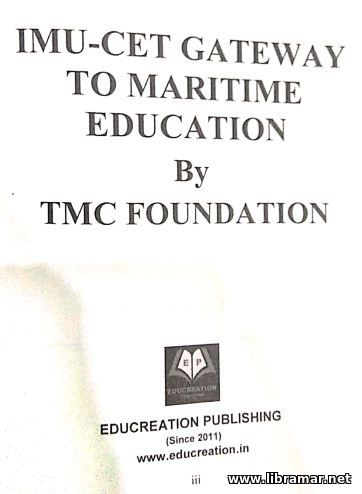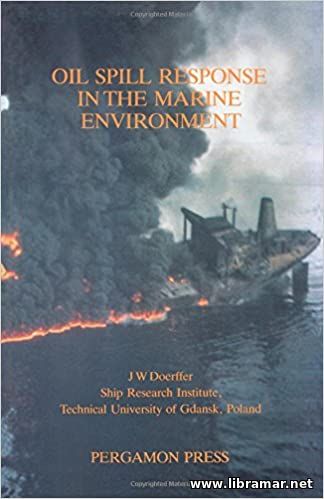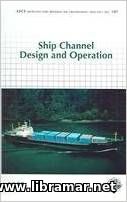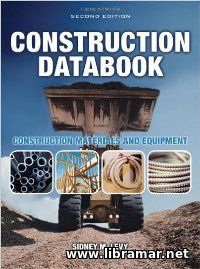
IMU-CET - Gateway to Maritime Education
27.01.2022  The main idea of the current publication was to let readers get better understanding of the marine environments as well as of the behavior of the hydrocarbons once they have been released onto the ocean surface; it also explores the different methods of proper response to the oil spills. The author has made significant efforts to reflect all trends and relevant levels of the oilfield development. The fast growth of the economy of the countries straight after the completion of the Second World War has eventually resulted in the rapid rise of the maritime transportation of the oil and other raw materials; the offshore activities has considerably increased, too, which, of course, has led to the significant number of accidents and incidents, such as the groundings and collision, which, in turn, resulted in the oil spilled to the sea on the frequent basis. The opening part of the volume covers the essential characteristics of the oils, while the second one deals with the chemical methods of treatment such as the cleansing, dispersion, chemical barriers etc. the mechanical responses have been dealt with in a separate chapter; note that after that the oil spill combating is discussed together with the contingency planning and associated limitations. 09.10.2021  The present manual is intended to provide readers with a comprehensive overview of the whole process of designing the ship channels and also the operation of different deep draft ship navigation projects. The reliability of the shipping channels is of great importance to the commercial navigation; note that it is also considered vital to the defense interests of the country since it plays one of the key roles in the rapid deployment of the vessels serving the Navy, Army and the Coast Guard. The document is covering the established ship channel design practices and other critically important aspects, and is expected to be used as a design guidance for all practicing engineers as well as for the government agencies engaged in the design/operation of the above mentioned systems; for sure, it is a great textbook for the classes and training courses relating to navigation engineering. Arranged in nearly twenty chapters, the content of the document addresses the project design and ship characteristics, describes different factors that commonly influence the channel design, depth, alignment and width of the ship channels, estuary hydraulics, jetties and ship locks, sedimentation, various important environmental considerations, ice management, real-life case studies, operational matters, maintenance, model studies etc.
30.07.2021  The present volume is mainly intended to serve as a reference book and class text in technical drawing. The content of the book includes numerous problems that cover literally every single phase of the subject; it is also constituting a full teaching unit. The authors have been encouraged in their initial aim by the extensive use of the text of this volume during the past several decades, and that aim was to prepare a tool which would be teaching the engineering language and to keep it duly updated with the latest developments. The original idea was to explain and illustrate each of the fundamental principles from the student's standpoint and to make the content interesting enough so that the students can read the book and study on their own initiatives. This fourth release of the book constitutes the thorough revision that the text did undergo. In fact, very small part of the original text and illustration has remained from the previous edition of the book. A huge number of new problems and informative illustrations have been added and hundreds of the old illustrations have been completely redrawn. The entire content of the book has been revised in order to duly reflect the latest recognized American Standards. Another improvement to the content is the adoption of a new format permitting the reproduction of illustrations larger for easier use. 30.07.2021  This perfectly compiled and really useful volume is actually intended to provide people with a course of engineering mathematics. No matter what field of engineering readers are actually studying, all of them will for sure require proper knowledge of math that is covered in this volume. The authors have applied a remarkably thorough approach putting the concepts into the engineering context to help readers get correct understanding of the relevance of math techniques shown in this book and also get full appreciation of drawing upon them throughout their studies. The main content of the volume has been arranged in thirteen chapters covering the general intro to both geometry and algebra, functions and complex numbers, vector and matrix algebra, discrete mathematics, sequences, limits and series, integration and differentiation, further calculus, ordinary differential equations as well as Fourier series and Laplace transforms, theory of probability plus data handling. All chapters have been supplemented with the practical review exercises for easier understanding of the subject. Some of the additional valuable info is there the appendices to the main part, covering the trigonometric identities and derivatives/integrals, and some useful results and standard integrals. 10.06.2021  We are offering you to have a glance at this thoroughly revised edition of maybe the most popular construction databook available today and providing the most up-to-date details on the construction materials plus all relevant equipment. This practical all-inclusive compendium is containing hundreds of the data tables and technical specifications together with the charts and very informative illustrations that cover literally all of the materials/equipment that are usually utilized at any work. The readers will find the easy-to-use and very practical information addressing the selection and application of the materials/equipment, dimensions of the construction components and valuable instructions of their installation, This new release also features the complete coverage of new details on the energy-saving options and also on sustainable materials. The publication is expected to be a perfect reference tool for all construction projects - it will help all readers to run any construction work in an efficient and economical manner. Among the topics covered within this volume there are the utilities and all equipment of the construction site, soils, the building envelope, soils, carpentry and framing, fire- and soundproofing. relevant mechanical systems plus the associated equipment, electrical installations and arrangements, plumbing, coverings and other valuable information. |
The "Read Later" function allows you to add material to this block with just one click. Just click on the icon and read the articles that interest you at any convenient time.